The Hypoxic Proteome and Metabolome of Barley (Hordeum vulgare L.) with and without Phytoglobin Priming
- PMID: 32102473
- PMCID: PMC7073221
- DOI: 10.3390/ijms21041546
The Hypoxic Proteome and Metabolome of Barley (Hordeum vulgare L.) with and without Phytoglobin Priming
Abstract
Overexpression of phytoglobins (formerly plant hemoglobins) increases the survival rate of plant tissues under hypoxia stress by the following two known mechanisms: (1) scavenging of nitric oxide (NO) in the phytoglobin/NO cycle and (2) mimicking ethylene priming to hypoxia when NO scavenging activates transcription factors that are regulated by levels of NO and O2 in the N-end rule pathway. To map the cellular and metabolic effects of hypoxia in barley (Hordeum vulgare L., cv. Golden Promise), with or without priming to hypoxia, we studied the proteome and metabolome of wild type (WT) and hemoglobin overexpressing (HO) plants in normoxia and after 24 h hypoxia (WT24, HO24). The WT plants were more susceptible to hypoxia than HO plants. The chlorophyll a + b content was lowered by 50% and biomass by 30% in WT24 compared to WT, while HO plants were unaffected. We observed an increase in ROS production during hypoxia treatment in WT seedlings that was not observed in HO seedlings. We identified and quantified 9694 proteins out of which 1107 changed significantly in abundance. Many proteins, such as ion transporters, Ca2+-signal transduction, and proteins related to protein degradation were downregulated in HO plants during hypoxia, but not in WT plants. Changes in the levels of histones indicates that chromatin restructuring plays a role in the priming of hypoxia. We also identified and quantified 1470 metabolites, of which the abundance of >500 changed significantly. In summary the data confirm known mechanisms of hypoxia priming by ethylene priming and N-end rule activation; however, the data also indicate the existence of other mechanisms for hypoxia priming in plants.
Keywords: N-end rule; anaerobiosis; ethylene; hemoglobin; histones; stress priming.
Conflict of interest statement
The authors declare no conflict of interest.
Figures
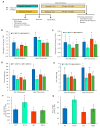
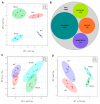



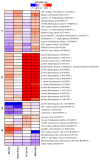



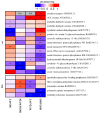

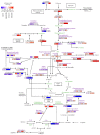
Similar articles
-
Expression of phytoglobin affects nitric oxide metabolism and energy state of barley plants exposed to anoxia.Plant Sci. 2017 Dec;265:124-130. doi: 10.1016/j.plantsci.2017.10.001. Epub 2017 Oct 7. Plant Sci. 2017. PMID: 29223334
-
The effect of phytoglobin overexpression on the plant proteome during nonhost response of barley (Hordeum vulgare) to wheat powdery mildew (Blumeria graminis f. sp. tritici).Sci Rep. 2020 Jun 8;10(1):9192. doi: 10.1038/s41598-020-65907-z. Sci Rep. 2020. PMID: 32513937 Free PMC article.
-
Phytoglobin overexpression promotes barley growth in the presence of enhanced level of atmospheric nitric oxide.J Exp Bot. 2019 Aug 29;70(17):4521-4537. doi: 10.1093/jxb/erz249. J Exp Bot. 2019. PMID: 31245808 Free PMC article.
-
Tolerance of roots to low oxygen: 'Anoxic' cores, the phytoglobin-nitric oxide cycle, and energy or oxygen sensing.J Plant Physiol. 2019 Aug;239:92-108. doi: 10.1016/j.jplph.2019.04.010. Epub 2019 Apr 26. J Plant Physiol. 2019. PMID: 31255944 Review.
-
Nitrate-Nitrite-Nitric Oxide Pathway: A Mechanism of Hypoxia and Anoxia Tolerance in Plants.Int J Mol Sci. 2022 Sep 29;23(19):11522. doi: 10.3390/ijms231911522. Int J Mol Sci. 2022. PMID: 36232819 Free PMC article. Review.
Cited by
-
Plant Life with and without Oxygen: A Metabolomics Approach.Int J Mol Sci. 2023 Nov 12;24(22):16222. doi: 10.3390/ijms242216222. Int J Mol Sci. 2023. PMID: 38003412 Free PMC article. Review.
-
Transcriptional and Metabolic Changes Associated with Phytoglobin Expression during Germination of Barley Seeds.Int J Mol Sci. 2020 Apr 17;21(8):2796. doi: 10.3390/ijms21082796. Int J Mol Sci. 2020. PMID: 32316536 Free PMC article.
-
Transcriptome and metabolome analyses reveal molecular insights into waterlogging tolerance in Barley.BMC Plant Biol. 2024 May 9;24(1):385. doi: 10.1186/s12870-024-05091-8. BMC Plant Biol. 2024. PMID: 38724918 Free PMC article.
-
Proteomic Studies of Roots in Hypoxia-Sensitive and -Tolerant Tomato Accessions Reveal Candidate Proteins Associated with Stress Priming.Cells. 2022 Jan 31;11(3):500. doi: 10.3390/cells11030500. Cells. 2022. PMID: 35159309 Free PMC article.
-
Nitric Oxide and Globin Glb1 Regulate Fusarium oxysporum Infection of Arabidopsis thaliana.Antioxidants (Basel). 2023 Jun 21;12(7):1321. doi: 10.3390/antiox12071321. Antioxidants (Basel). 2023. PMID: 37507861 Free PMC article.
References
-
- CRED/UNISDR . The Human Cost of Weather Related Disasters, 1995–2015. CRED; Brussels, Belgium: 2015. pp. 5–16.
-
- WFP World Food Programme Ready to Respond to Food Crisis in Malawi. [(accessed on 10 February 2020)]; Available online: https://www.wfp.org/news/news-release/world-food-programme-ready-respond....
-
- Sasidharan R., Bailey-Serres J., Ashikari M., Atwell B.J., Colmer T.D., Fagerstedt K., Fukao T., Geigenberger P., Hebelstrup K.H., Hill R.D., et al. Community recommendations on terminology and procedures used in flooding and low oxygen stress research. New Phytol. 2017;214:1403–1407. doi: 10.1111/nph.14519. - DOI - PubMed
-
- Yordanova R.Y., Popova L.P. Flooding-induced changes in photosynthesis and oxidative status in maize plants. Acta Physiol. Plant. 2007;29:535–541. doi: 10.1007/s11738-007-0064-z. - DOI
MeSH terms
Substances
Grants and funding
LinkOut - more resources
Full Text Sources
Miscellaneous

